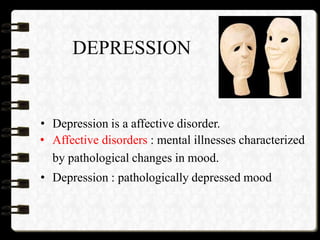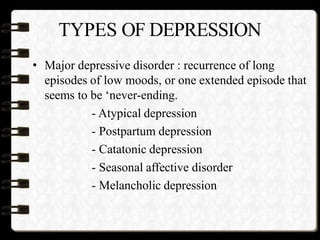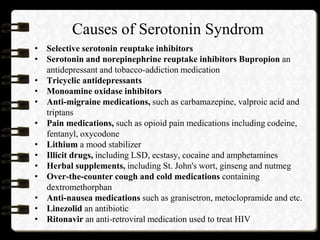Depression is a common mental disorder characterized by depressed mood, loss of interest or pleasure, feelings of guilt or low self-worth, and poor concentration. There are several types of depression including major depressive disorder, dysthymic disorder, postpartum depression, and seasonal affective disorder. Symptoms include feelings of sadness, changes in appetite and sleep, fatigue, anxiety, and thoughts of death or suicide. Depression is caused by genetic, environmental, biochemical and physiological factors and can be effectively treated with antidepressant medication, psychotherapy like CBT or IPT, and lifestyle changes to reduce stress and improve sleep and social support.

















































